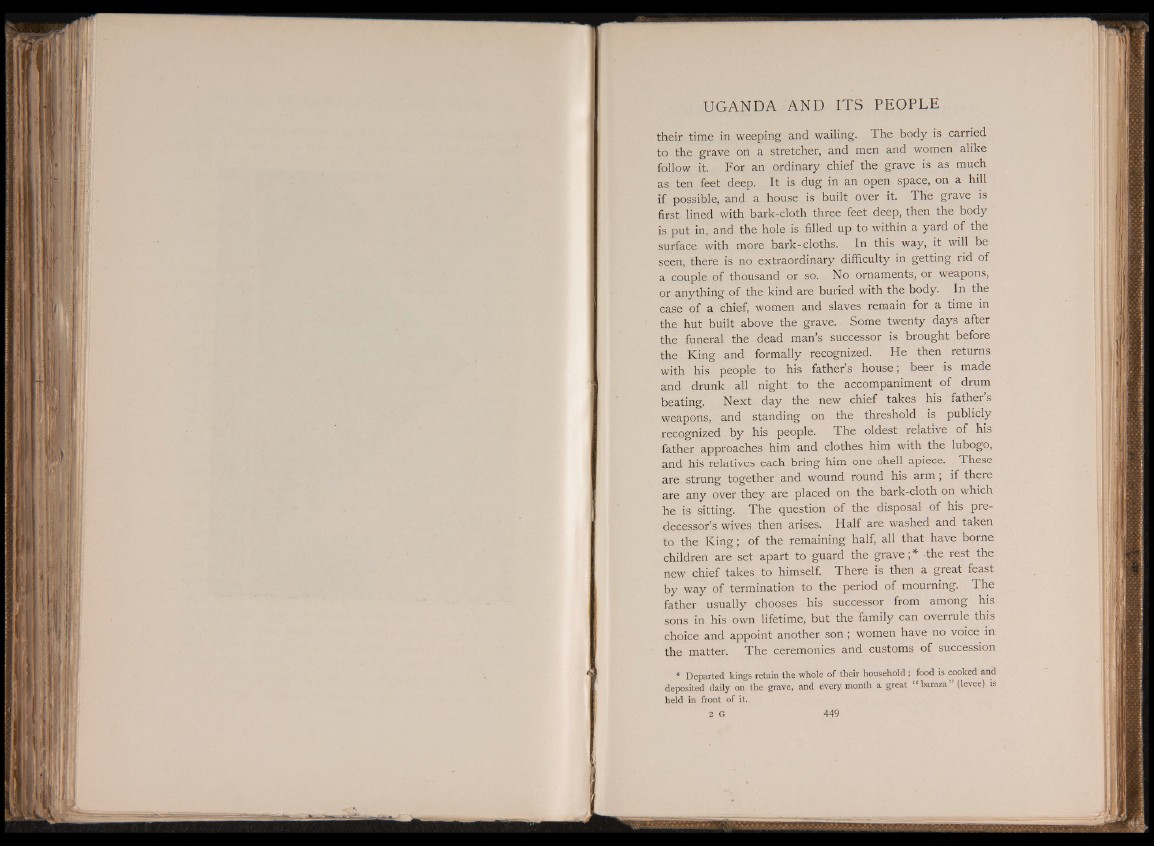
U G A N D A A N D I T S P E O P L E
their time in weeping and wailing. The body is carried
to the grave on a stretcher, and men and women alike
follow it. For an ordinary chief the grave is as much
as ten feet deep. It is dug in an open space, on a hill
if possible, and a house is built over it. The grave is
first lined with bark-cloth three feet deep, then the body
is put in, and the hole is filled up to within a yard of the
surface with more bark-cloths. In this way, it will be
seen, there is no extraordinary difficulty in getting rid of
a couple of thousand or so. No ornaments, or weapons,
or anything of the kind are buried with the body. In the
case of a chief, women and slaves remain for a time in
the hut built above the grave. Some twenty days after
the funeral the dead man’s successor is brought before
the King and formally recognized. He then returns
with his people to his father’s house; beer is made
and drunk all night to the accompaniment of drum
beating. Next day the new chief takes his father’s
weapons, and standing on the threshold is publicly
recognized by his people. The oldest relative of his
father approaches him and clothes him with the lubogo,
and his relatives each bring him one shell apiece. These
are strung together and wound round his arm; if there
are any over they are placed on the bark-cloth on which
he is sitting. The question of the disposal of his predecessor’s
wives then arises. Half are washed and taken
to the King; of the remaining half, all that have borne
children are set apart to guard the grave;* -the rest the
new chief takes to himself. There is then a great feast
by way of termination to the period of mourning. The
father usually chooses his successor from among his
sons in his own lifetime, but the family can overrule this
choice and appoint another son; women have no voice in
the matter. The ceremonies and customs of succession
* Departed kings retain the whole of their household; food is cooked and
deposited daily on the grave, and every month a great “ baraza” (levee) is